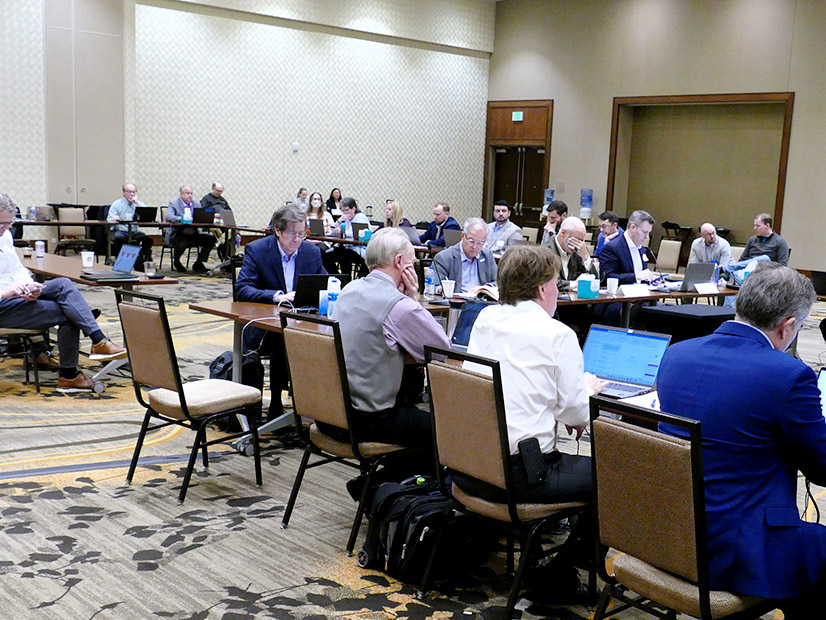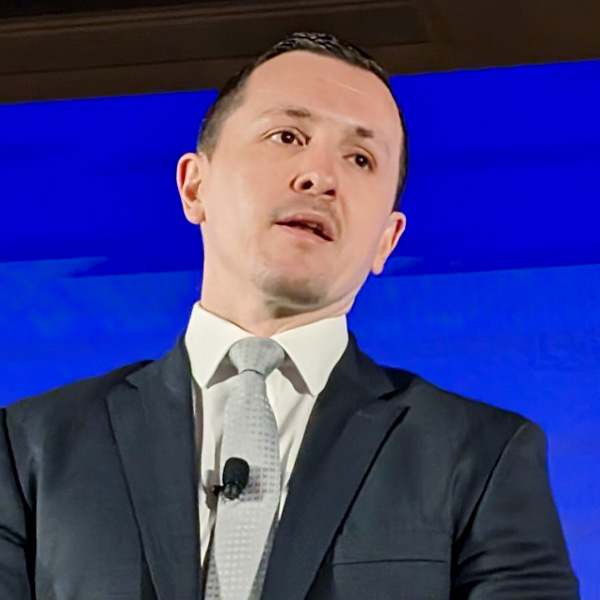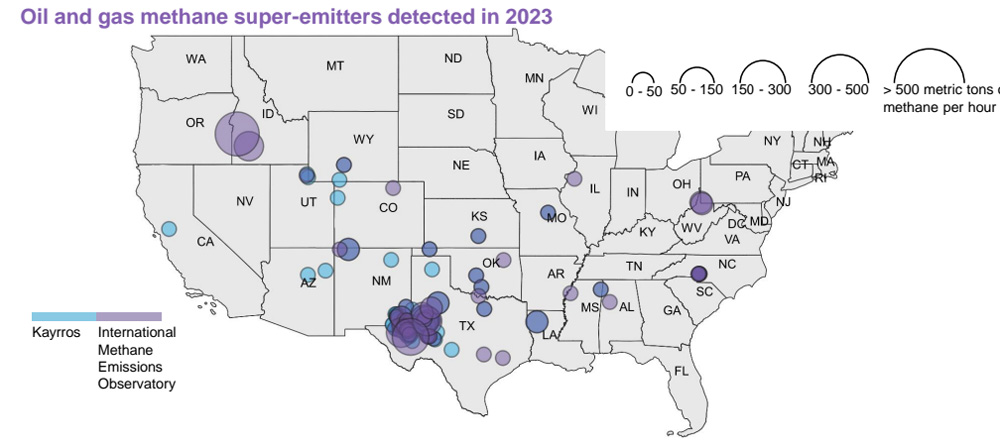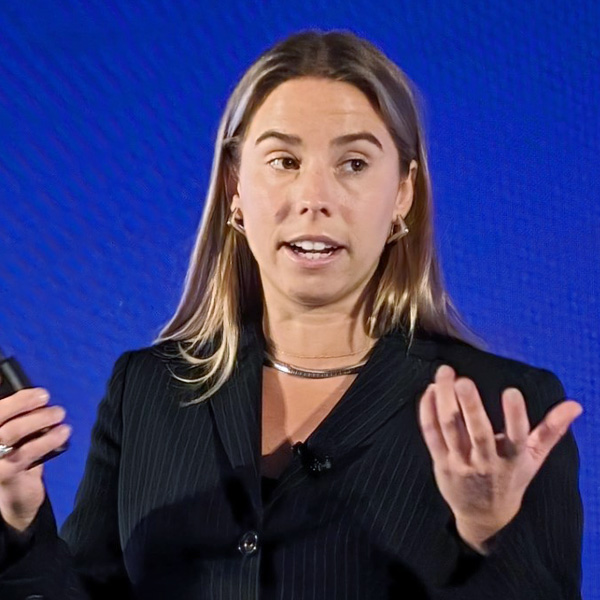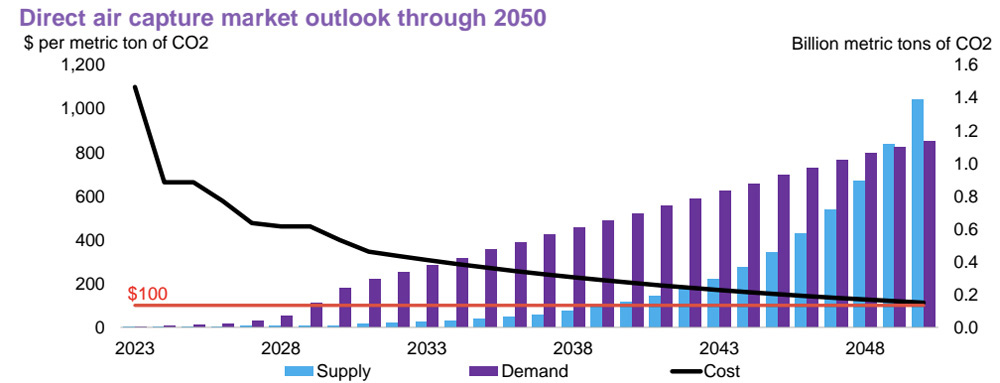UNION, N.J. — Innovation and in-state project development by engineers and thinkers will be key to New Jersey’s offshore wind future as the state advances its groundbreaking initiative to create an offshore power center that can connect to homes and businesses onshore, according to speakers at the Wind Institute Research Symposium.
The extensive scale of the task, and the lack of history in creating such a major transition, will mean the work of problem-solving engineers, entrepreneurs and academics will be critical to overcoming the expected and still-unknown hurdles, speakers told the audience at Kean University on April 12.
Leading a panel on OSW research and collaboration, Kris Ohleth, executive director of the Special Initiative on Offshore Wind, said that after working for 25 years in the sector, she sees the state at a critical juncture, sitting on the cusp of bringing OSW to reality.
“We said 20 to 25 years ago, ‘OK, we know these are going to be the challenges, and once we get through this development phase of offshore wind and we move to this phase of implementation that we are at today, someone’s going to figure it out,’” she said. “And those someones are you — you folks sitting here today.”
Present in the audience, and among those outlining their work, were many of the 40 participants in the institute’s fellowship program started last year. Among the topics tackled by fellows, and showcased at the forum, were the socioeconomic and policy implications of OSW projects, how to secure public support, the development of a weather station that could predict wind energy generation, and how to make more effective and quieter turbine blades.
Unknown Future
New Jersey is seeking to revitalize its OSW sector after Danish developer Ørsted in October withdrew its two projects planned for the Jersey shore: Ocean Wind 1, the state’s first OSW venture, and Ocean Wind 2, one of two projects awarded in the state’s second solicitation.
The withdrawal left the state with just one active project: Atlantic Shores. The Board of Public Utilities approved two more Jan. 4: Leading Light Wind and Attentive Energy Two. If they come to fruition, the three projects would have a capacity of 5,252 MW, a major step toward the state’s goal of 11 GW by 2040. But getting there is no easy task, Tim Sullivan, executive director of the New Jersey Economic Development Authority, told the group.
“This is not like flipping a switch and it’s going to happen,” he said. “There are big known unknowns that we are counting on innovation to bail us out of, of how we are actually going to deliver on the promise of offshore wind.
“No one’s ever done this before. No one’s ever put an 11-GW power plant off the coast of a major industrial state and plugged it into a grid that is not particularly new and made it come out of people’s houses,” said Sullivan, whose agency helped organize the event and provides financial support for OSW projects. “We don’t know exactly how that’s going to work. You all, and others around the world, are working on those challenges.”
Public Concern
Key to the success of the projects will be the public reaction as construction gets underway and the cost of transitioning to coastal wind generated power becomes clearer.
The most vigorous opposition to the projects has emerged from the commercial fishing industry, local residents and tourist businesses, who fear that turbines in the ocean will damage the local quality of life. Several presenters at the symposium focused on the issue and where the opposition stemmed from.
Dylan Irmiere, a Stockton University student and a fellow of the wind institute, said that in the two public opinion surveys he commissioned and conducted in New Jersey as part of his research, 46% of those polled — including residents in the shore area and the rest of the state — had no knowledge at all of the wind projects, and 41% had slight to moderate knowledge of them.
The research showed positive public support among respondents for OSW as a solution to fight climate change, he said. Only one in five believed there would be environmental harm, and about 58% thought the projects would help the environmental, while about 60% said they believed the farms would help the economy.
However, when the respondents were given additional facts — what Irmiere called “surface-level knowledge” — about project distance from shore, the predicted economic benefits and the background of developers, only 33% said they wanted the projects to continue, and nearly a quarter said they did not support the continuance of the projects.
The fact that nearly a quarter of people had concerns after the intervention “could mean that they are still lacking sufficient information to form an educated opinion,” Irmiere said. He added that even after survey respondents were given information about federal actions to protect marine animals, 31% were neither satisfied nor dissatisfied, suggesting they “could need” more information.
“Learning that providing information to respondents about the environment and the economy helps to form sentiments of offshore wind gains should be something that companies developing these projects, as well as the governments in local communities, focus on,” he said. “To encourage the public to think more positively, sentiments about offshore wind should be constructed in a way that demonstrates their effectiveness on the environment and the economy.”
The surveys also showed how turbine distance from the shore can affect public support: While about 33% agreed that three miles offshore was a “reasonable distance” to site turbines, that figure grew to 55% for 12 miles and 59% for 20 miles.
Aparna Varde, associate professor in the Montclair State University School of Computing, said she and a graduate student, Isabele Bittencourt, studied social media posts about the projects. Their work focused on sentiment analysis, looking at whether the prevailing sentiments expressed are positive or negative to offshore wind; and topic modeling, to see what issues were raised most in posts about the wind projects.
The pair used three different methods of analysis, and all three found that between 37 and 40% of the comments were positive and between 26 and 36% were neutral, Varde said. Between a quarter and a third of the posts were negative, according to her presentation. Still, the positive slant to the comments was far from overwhelming, she said.
Tracking Mammals Underwater
The impact on marine life of wind farms emerged as a potent issue early in 2023 when a series of dead whales washed up on New Jersey shores. Opponents have raised concerns that preliminary work on the wind farms contributed to the deaths, even though no construction has started and federal investigators have found no connection between the deaths and the wind projects.
State officials told the symposium they are taking steps to minimize any harm. Offshore wind developers pay a fee of $10,000/MW to the state Research and Monitoring Initiative (RMI), which to date has been awarded $65 million for research projects, according to speakers from the New Jersey Department of Environmental Protection and the BPU. The RMI has awarded $13 million of that money to research projects, including one that sends “ocean gliders” into the sea to collect data on water temperature, and the level of chlorophyll and pH in the water.
“These gliders are autonomous mobile platforms that are outfitted with a suite of sensors that collect really high spatial and temporal resolution data on water chemistry and physical ocean processes, like the seasonal formation and breakdown of the cold pool,” said Caitlin McGarigal, a research scientist at the DEP, referring to the seasonal stratification of cooler water close to the ocean bottom.
“This just sort of exemplifies the type of data that’s being collected on this project and how these data can be really useful for understanding wildlife movement and behavior,” she said.
Another RMI-backed project is using acoustic telemetry — “like an underwater E-ZPass” — to set up receiver listening stations that can rack species that have been tagged, she said. A third project is helping the National Marine Fisheries Service to expand a project that uses aerial tracking from planes to study the movement of whales in New Jersey waters, she said.

